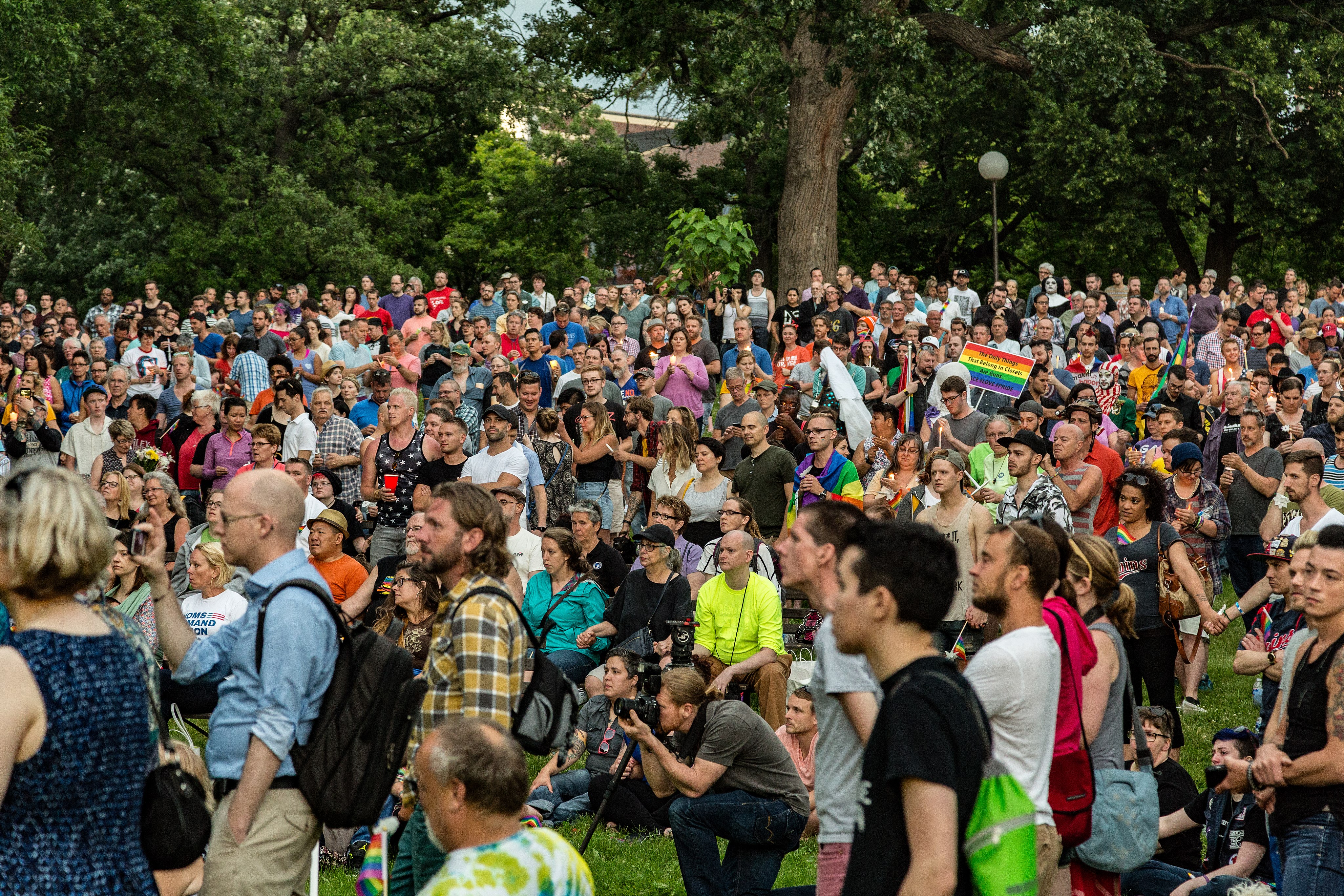
“Vigil to Unite in the Wake of the Orlando Shooting” organized by OutFront Minnesota in Loring Park, Minneapolis, Minnesota, the evening of June 12, 2016. Tony Webster / Creative Commons
This week opened with heartbreaking news that a mass shooting in Las Vegas had taken the lives of more than 50 people and injured hundreds more. Mass shootings have become a tragic, frequent part of American life and death that nevertheless shock the soul.
At times like this, many of us are drawn to – or cannot avoid – media coverage of the event, seeking somehow to understand what has happened.
But you might find that much of the media coverage of events like the shooting in Las Vegas is not only flawed, but actively harmful. A study in 2013 showed that people who watched wall-to-wall media coverage of the Boston Marathon bombing experienced more “high acute stress” than people who were at the Marathon or had family there.
Here are some tips for navigating breaking news – which is not only stressful to watch, but can be problematic in other ways.
1. Read On the Media’s Breaking News Consumer Handbook.
After a tragic event like a mass shooting, assume that the news media will not get the whole story right away. The scene after an event is often chaotic, with different perspectives and rumors circulating, and the internet amplifies misinformation, helping it spread quickly. Good reporting takes time, and often comes out of local news sources that are part of the affected community. Seek these out - and print out the Breaking News Consumer Handbook to keep in mind the next time there is breaking news.
2. Be wary of sensationalized coverage that obscures the human costs of tragedy.
The sociologist Zeynep Tufekci has studied media coverage of public mass shootings and has shown that the way the media covers these events can actually inspire further violence by showering attention on the perpetrators of mass violence. She has urged the media to keep its coverage somber, rather than sensationalized and graphic, and to focus on victims of violence rather than the perpetrators. As a media consumer, seek out the outlets and stories that do this, and don’t share sensationalized stories on social media.
3. Watch out for racist and Islamophobic news coverage.
Researchers have shown that media coverage of acts of violence promotes racist stereotypes and unduly influences public opinion. For example, when a perpetrator of mass violence is white, the news media tends to avoid labeling him a “terrorist” or “extremist” and will instead use terms like “lone wolf,” or look at “mental illness” as an underlying cause, while portraying perpetrators who are not white as calculating criminals.
At AFSC our own research showed that 90 percent of the time when the media covers extremist violence, they also mention Islam – even when it is not part of the event being covered. This coverage comes from and promotes dangerous, wildly inaccurate stereotypes of Islam as linked to violence, and feeds Islamophobia.
4. Turn off the TV, put down your phone, and do something else.
The news will still be there later. Getting constant updates can give you the illusion that you are doing something when you feel helpless. Instead of compulsively checking the news, though, do something else: Take some time to reflect. Spend time with your loved ones. You might consider taking action: donate blood; donate money; or call on your representatives to enact sensible gun control legislation, properly fund mental health programs, and take meaningful steps to address the root causes of violence in our communities.
And hold the victims of this horrific event in the light.